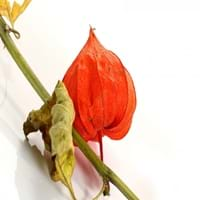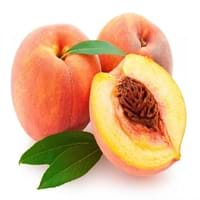Health Benefits
Anti-oxidant properties, Anti-inflammatory properties, Cancer prevention, Maintains healthy cholesterol level, Reduces blood circulation problems, Treatment of cough, fever & sore throat, Treatment of Hypertension
Cancer prevention, Heart care, Improves eye vision, Reduces stress, Regulation of heart rate
General Benefits
Treatment of asthma, Treatment of cataract, Treatment of hepatitis, Treatment of macular degeneration, Treatment of neurodegenerative diseases
Anti oxidant properties, Eye care
Skin Benefits
Treatment of Rheumatism & Dermatitis, Treatment of Skin Inflammation
Heals sunburn, Reduces wrinkles, Treatment of skin diseases
Hair Benefits
Unknown
Prevents hair loss
Allergy Symptoms
NA
Abdominal pains, Anaphylaxis, Breathing difficulty, Diarrhea, Dizziness, Hives, Itching, Lightheadedness, Nasal congestion, Nausea, Swelling of mouth, tongue or lips, Tingling sensation in mouth, Vomiting, Wheezing
Side Effects
Hypertension, Ventricular Tachycardia
Allergic reaction
Best Time to Eat
As a snack in the late afternoon, Eat the fresh ones, avoid mixing with any other foods, don't eat after meal., Morning time (before lunch), Strictly avoid empty stomach
As a snack in the late afternoon, Eat the fresh ones, avoid mixing with any other foods, don't eat after meal., Morning time (before lunch)
Vitamin B5 (Pantothenic Acid)
Not Available
Vitamin B6 (Pyridoxin)
Not Available
Vitamin B9 (Folic acid)
Not Available
Vitamin C (Ascorbic Acid)
Vitamin K (Phyllochinone)
Not Available
Lutein+Zeaxanthin
Not Available
Phytosterol
Not Available
Water Content
Not Available
Calories in Fresh Fruit with Peel
Calories in Fresh Fruit without Peel
Not Available
Not Available
Calories in Frozen Form
Not Available
Calories in Dried Form
Not Available
Calories in Canned Form
Not Available
Type
Fruit vegetable
Tree fruit
Season
Spring, Summer
Autumn, Summer
Varieties
Physalis franchetii, Physalis pruinosa, Physalis peruviana, Physalis heterophylla and Physalis philadelphica
Reliance, Sweet Scarlet, Spring Snow, Sugar May, Santa Rosa, Red Beauty, Glowhaven, Cresthaven and Redhaven Peaches
Color
Bright Yellow, Orange
Pink, Red, White, Yellow, Yellowish-orange
Inside Color
Orange
Yellow
Soil Type
NA
Sandy loam, Well-drained
Climatic Conditions
NA
Cold, Warm
Facts about
NA
- In china, peaches are considered as a symbol of good luck.
- From 1982, august is National peach month in USA.
- In roman times, Peaches were also called as Persian apples, as people assumed that they originated from Persia.
Other Countries
NA
Greece, Italy, Spain, United States of America
Top Importer
Netherlands
Germany
Top Exporter
Colombia
Spain
Botanical Name
Physalis Peruviana
Prunus persica
Synonym
Alkekengi, Herschellia & Pentaphitrum
Not Available
Subkingdom
Tracheobionta
Tracheobionta
Division
Magnoliophyta
Magnoliophyta
Class
Magnoliopsida
Magnoliopsida
Subclass
Asteridae
Rosidae
Family
Solanaceae
Rosaceae
Species
Physalis
P. persica
Generic Group
Not Available
Rose
Difference Between Physalis and Peach
We might think that Physalis and Peach are similar with respect to nutritional value and health benefits. But the nutrient content of both fruits is different. Physalis and Peach Facts such as their taste, shape, color, and size are also distinct. The difference between Physalis and Peach is explained here.
The amount of calories in 100 gm of fresh Physalis and Peach with peel is 77.00 kcal and 39.00 kcal and the amount of calories without peel is Not Available and Not Available respectively. Thus, Physalis and Peach belong to High Calorie Fruits and Low Calorie Fruits category.These fruits might or might not differ with respect to their scientific classification. The order of Physalis and Peach is Solanales and Rosales respectively. Physalis belongs to Solanaceae family and Peach belongs to Rosaceae family. Physalis belongs to Physalis genus of Physalis species and Peach belongs to Prunus genus of P. persica species. Beings plants, both fruits belong to Plantae Kingdom.









